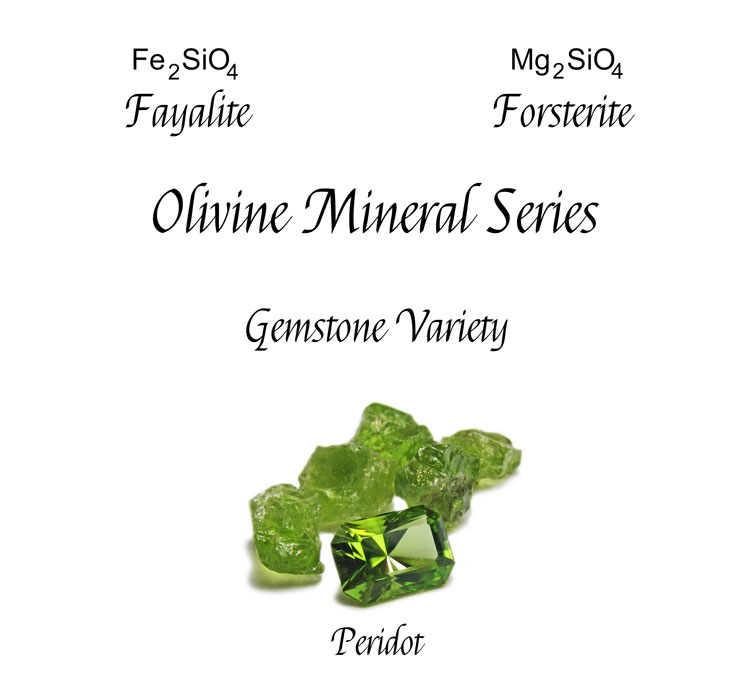
Found in igneous and metamorphic rocks, olivine is actually a mineral series and not a single mineral. In a mineral series two or more elements can substitute for one another without changing the crystal structure. Olivine is a combination of iron and magnesium, with one end of the series, fayalite (Fe2SiO4), that has more Iron than magnesium and the other end, forsterite (Mg2SiO4), that has more magnesium than iron. Olivine refers to the entire series of minerals as it can be difficult to differentiate the similar minerals within the series. Also included in the series are other, more rare, minerals that can have calcium (Ca), manganese (Mn), or nickel (Ni) as substitutes for iron (Fe), or magnesium (Mg).
The name olivine was given by A.G. Werner in 1790, referencing the olive-green color of this mineral. The name forsterite honors J.R. Forster (1739-1806), an English mineral collector and dealer, and the name fayalite was named in 1840 after the Island of Faial. Fayalite was named after Faial because it was thought, at the time, the source of the mineral was local volcanic rock. Now it is now believed to have been sourced from dumped slag from a ship’s ballast instead. Peridot, the only gemstone variety of olivine, is derived from the Arabic “faridat,” meaning gem.
Specs
| Chemical Formula | (Mg,Fe)2SiO4 | Composition | Iron and Magnesium |
|---|---|---|---|
| Color | Light green, dark green, yellow-green, yellow-brown, and brown | ||
| Crystal System | Orthorhombic | Hardness | 6.5-7 |
| Transparency | Transparent to translucent | Luster | Vitreous |
